Software
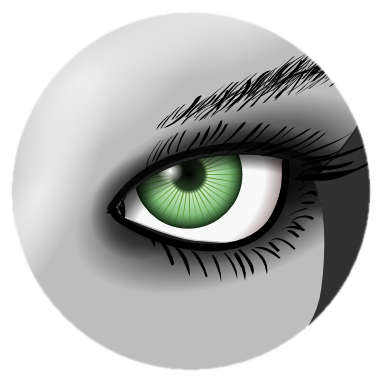
MeshLab
MeshLab is an open source, portable, and extensible system for the processing and editing of unstructured 3D triangular meshes. It also supports processing of raw data produced with 3D digitization tools/devices, providing a set of tools for editing, cleaning, healing, inspecting, rendering, texturing and converting this kind of models.
Contacts: Paolo Cignoni
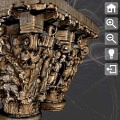
3DHOP
3DHOP (3D Heritage Online Presenter) is an advanced solution for easy publishing of 3D content on the web. This free tool allows the interactive visualization of 3D models directly inside HTML pages and the streaming of multiresolution meshes over HTTP, supporting the exploration of very large high-resolution 3D models. It is based on WebGL, SpiderGL and Nexus technologies, and can run on common browsers without the need for plugins.
Contacts: Marco Callieri

VCG
The Visualization and Computer Graphics Library (VCG for short) is a open source portable C++ templated library for manipulation, processing and displaying with OpenGL of triangle meshes. The library, composed by more than 150k lines of code, is released under the GPL license, and it is the base of most of the software tools of the Visual Computing Lab
Contacts: Paolo Cignoni and Fabio Ganovelli

TagLab
TagLab is an AI-powered annotation tool to speed up human labeling and statistics extraction from ortho-maps. Although designed to work on coral reef maps, it can be easily customized for other tasks, such as the labeling of medical or archaeological visual information.
Contacts: gaia.pavoni@isti.cnr.it

Nexus
Nexus is a software package for creation and visualization of a batched multiresolution mesh structure. The main goal of such data structure is to provide efficient multiresolution visualization of huge triangle meshes or point-clouds. Main features of this library are: out-of-core interactive visualization, multiple instancing of models, http streaming, compression, color per vertex, opensg Nexus node.
Contacts: Federico Ponchio
HexaLab
HexaLab is a WebGL application for real time visualization, exploration and assessment of hexahedral meshes. This visualization tool targets both users and scholars. Practitioners who employ hexmeshes for Finite Element Analysis, can readily check mesh quality and assess its usability for simulation. Researchers involved in mesh generation may use HexaLab to perform a detailed analysis of the mesh structure, isolating weak points and testing new solutions to improve on the state of the art and generate high quality images. The system also offers immediate access to a repository containing all the publicly available meshes produced with the most recent techniques for hex mesh generation.
Contacts: Paolo Cignoni
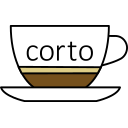
Corto
Corto is a library for compression and decompression meshes and point clouds (C++ and Javascript). Corto supports point clouds and meshes with per vertex attributes: normals, colors, texture coordinates and custom attributes.The main focus of this work is on decompression speed, see performances, both for C++ lib and javascript, while still providing good compression rates.
Contacts: Federico Ponchio
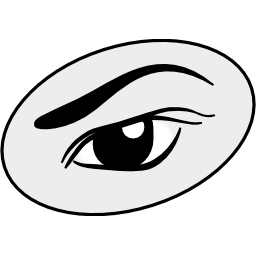
MeshLabJS
A javascript-based, run-in-browser, mesh processing tool. Inspired by the well known MeshLab is built using using the C++ vcg library for all the mesh processing tasks and compiled into asm.js using emscripten. The fastest way to look, inspect, process and convert a 3D model without installing any app; directly in your browser. Source code available on GitHub.
Contacts: Paolo Cignoni

MeshLab for iOS
MeshLab for iOs is an advanced 3D model viewer for iOS. MeshLab for iOS has been designed to be able to display complex 3D models in a simple and intuitive way, allowing the accurate inspection of a 3D model through a precise yet straightforward navigation.
Contacts: Paolo Cignoni

Piccante
Piccante is a C++11 open-source (LGPL license v3.0) imaging library, specifically designed for High Dynamic Range (HDR) processing. Piccante is modular, which means that can be extended with ease; e.g. writing new filters. .
Contacts: Francesco Banterle and Luca Benedetti
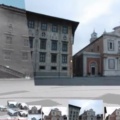
PhotoCloud
PhotoCloud is a real-time client-server system for interactive visualization and exploration of large datasets comprising calibrated 2D photographs of a scene and a 3D description of the scene. It includes a compact image browser and a multiresolution model renderer. Users can navigate the 2D and 3D spaces with smooth, integrated, seamless transitions between them.
Contacts: Marco Tarini and Federico Ponchio

SpiderGL
SpiderGL is a JavaScript 3D Graphics library which relies on WebGL for realtime rendering. SpiderGL provides typical structures and algorithms for realtime rendering to developers of 3D graphics web application,withoutforcingthem to comply with some specific paradigm (i.e. it is not a scene graph) nor preventing low level access to the underlying WebGL graphics layer.
Contacts: Marco di Benedetto
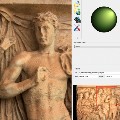
RTI Viewer
The RTIViewer allows to view and explore Reflectance Transformation Imaging (RTI) files at very high resolution (encoded by means of the following formats: Polynomial Texture Maps, Hemispherical Harmonics Map, and Multi-View RTI). RTIViewer render image files stored on your local file system, and remote files through HTTP.
Contacts: Gianpaolo Palma
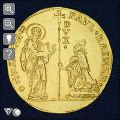
Web RTI Viewer
WebRTIViewer is an HTML5 viewer for high resolution RTI images (PTM and HSH). It allows even the visualization of standard images with common format (JPEG, PNG and TIF). It is based on WebGL and does not require any external plugings to install in your browser.
Contacts: Gianpaolo Palma
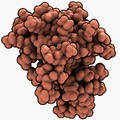
QuteMol
QuteMol is an open source (GPL), interactive, high quality molecular visualization system. QuteMol exploits the current GPU capabilites through OpenGL shaders to offers an array of innovative visual effects. QuteMol visualization techniques are aimed at improving clarity and an easier understanding of the 3D shape and structure of large molecules or complex proteins.
Contacts: Marco Tarini

Metro
Metro is a tool designed to evaluate the difference between two triangular meshes. Metro adopts an approximated approach based on surface sampling and point-to-surface distance computation. The tool has been widely used in the surface simplification research community (more than 500 citations accordng to google scolar ).
Contacts: Paolo Cignoni
Old Software
We have started many years ago to distribute for free our software tools, produced in the framework of research actions or of funded projects. The first resources involved visualization systems:
- TAn (Tetrahedra Analyzer): a multiresolution volume visualization system
- Bumpview: an interactive bump mapping technique
- Basrelief: atool for the computer assisted generation of Bas- and High reliefs.
or surface simplification codes
- Surfactor: isosurface fitting and simplification on regular volume datasets
- ECSiT: tetrahedral edge collapse simplification tool
- ZETA: a resolution modeling system
- 3D Delaunay Triangulation: incremental and "divide et impera" 3D triangulation of scattered datasets
or our early tools for processing 3D scanned data.
Those tools are now mostly obsolete and have been removed in the 2012 re-design of our web; please ask to Paolo Cignoni in case you are interested in having info on them.